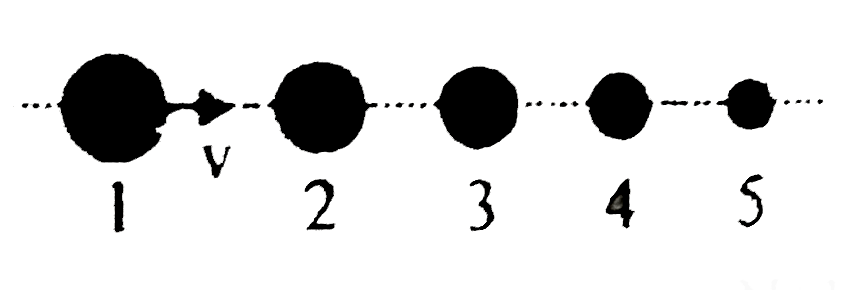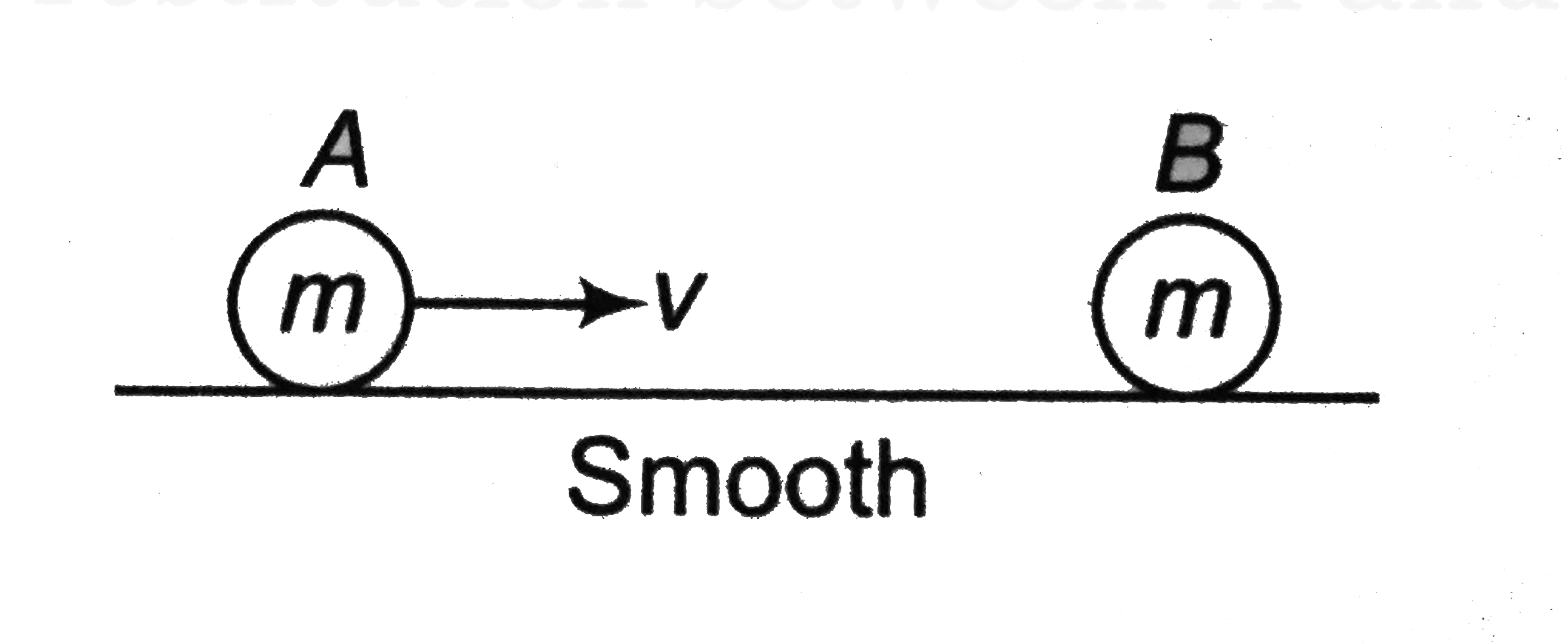N smooth spheres are placed in a row and their masses are in the ratio 1:1e:1e2……1eN−1 where e = coefficient of restitution. If velocity v is given to the first sphere, find the velocity of the last sphere.

v
e^(N_(ɣ))
eN+1v
eN−1v
The correct Answer is:D
Let v2 be the velocity of 2 after impact. Then by the law of collision v1−v2=−ev where v1 is the velocity of 1 after impact, By the law of conservation of momentum,
mv=mv1+mv2e⇒v=v1+v2e
⇒ev=ev1+v2
∴−ev1−v2=v1−v2
⇒v1=0 ∴v2=ev
Similarly
v3=ev2=−e2V and vN=eN−1v
Topper's Solved these Questions
- BOOK - BANSALCHAPTER - TEST PAPERSEXERCISE - PHYSICS PART B3videos
TEST PAPERS
- BOOK - BANSALCHAPTER - TEST PAPERSEXERCISE - PHYSICA PART A12videos
TEST PAPERS
- BOOK - BANSALCHAPTER - TEST PAPERSEXERCISE - PHYSICS PART (C )15videos
TEST PAPERS
- BOOK - BANSALCHAPTER - SEMICONDUCTORSEXERCISE - CBSE Question32videos
SEMICONDUCTORS
Similar Questions
Knowledge Check
- Question 1 - Select One
n smooth identical spheres are placed in a row and their masses are in the ratio 1:3:9:_________:3n−1 . Coefficient of restitution between any two successive collisions in 1/3. If first sphere is projected with a velocity v towards the second sphere, then calculate the velocity of the last sphere after (n−1)th sphere strikes it.
Av3nB3nvCv3n−1D3n−1v - Question 2 - Select One
A sphere A of mass m moving with a velocity hits another stationary sphere B of same mass. If the ratio of the velocity of the sphere after collision is vAvB=1−e1+e where e is the cofficient of restitution, what is the initial
velocity of sphere A with which it strikes?AvA+vBBvA−vBCvB−vAD(vA+vB)2 - Question 3 - Select One
A sphere of mass m moving with a constant velocity hits another stationary sphere of the same mass, if e is the coefficient of restitution, then ratio of speed of the first sphere to the speed of the second sphere after collision will be
A(1−e1+e)B(1+e1−e)C(e+1e−1)D(e−1e+1)
A sphere of mass m moving with velocity v collides head-on with another sphere of the same mass at rest. If the coefficient of resistitution e=1/2, then what is the ratio of final velocity of the second sphere to the intial velocity of the first sphere ?
View SolutionA particle of mass m1 collides head on with a stationary particles of mass m2. If m1m2 gte, where e is the coefficient of restitution, then :
View SolutionA partical of mass m1 collides head on with a stationary partical of mass m2. If m1m2>e where e is the coefficient of restitution, then :
View SolutionA sphere of mass m moving with a velocity u hits another stationary sphere of same mass. If e is the coefficient of restitution, what is the ratio of the velocities of two spheres after the collision?
View SolutionA sphere of mass m moving with a constant velocity u hits another stationary sphere of the same mass and of coefficient of restitution (e). The ratio of velocities of the two spheres, after collision, will be
View Solution


